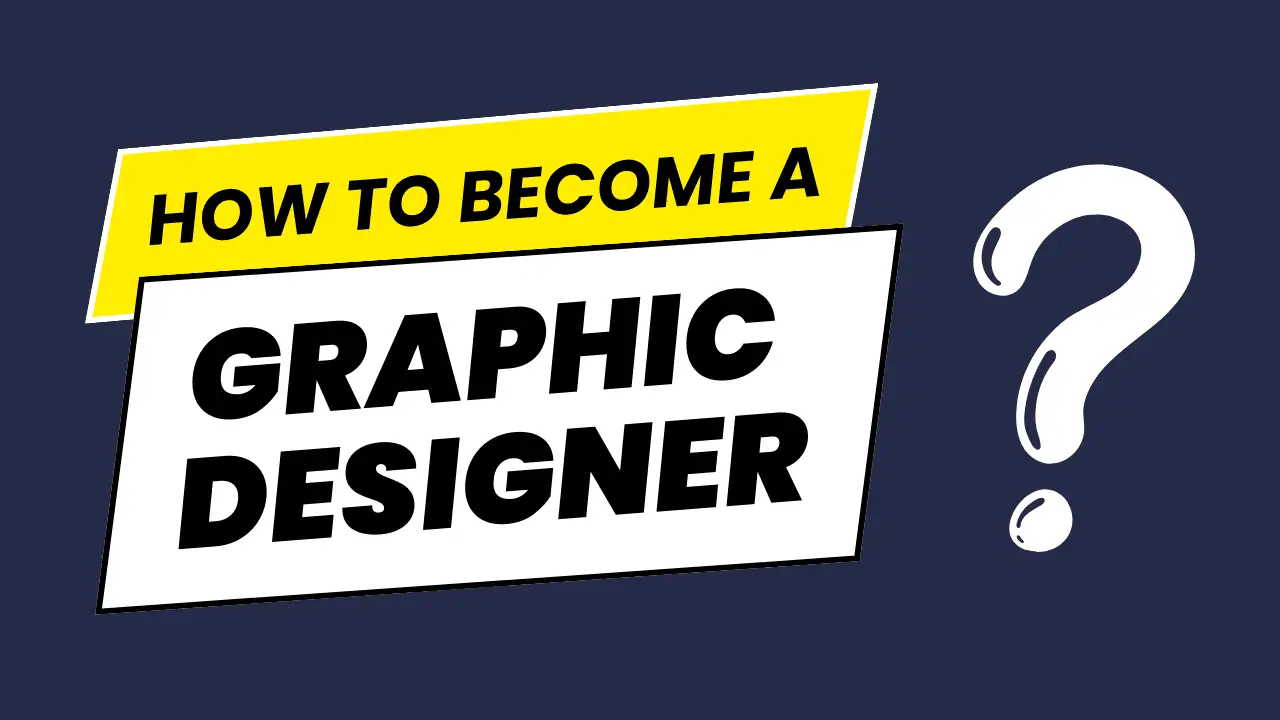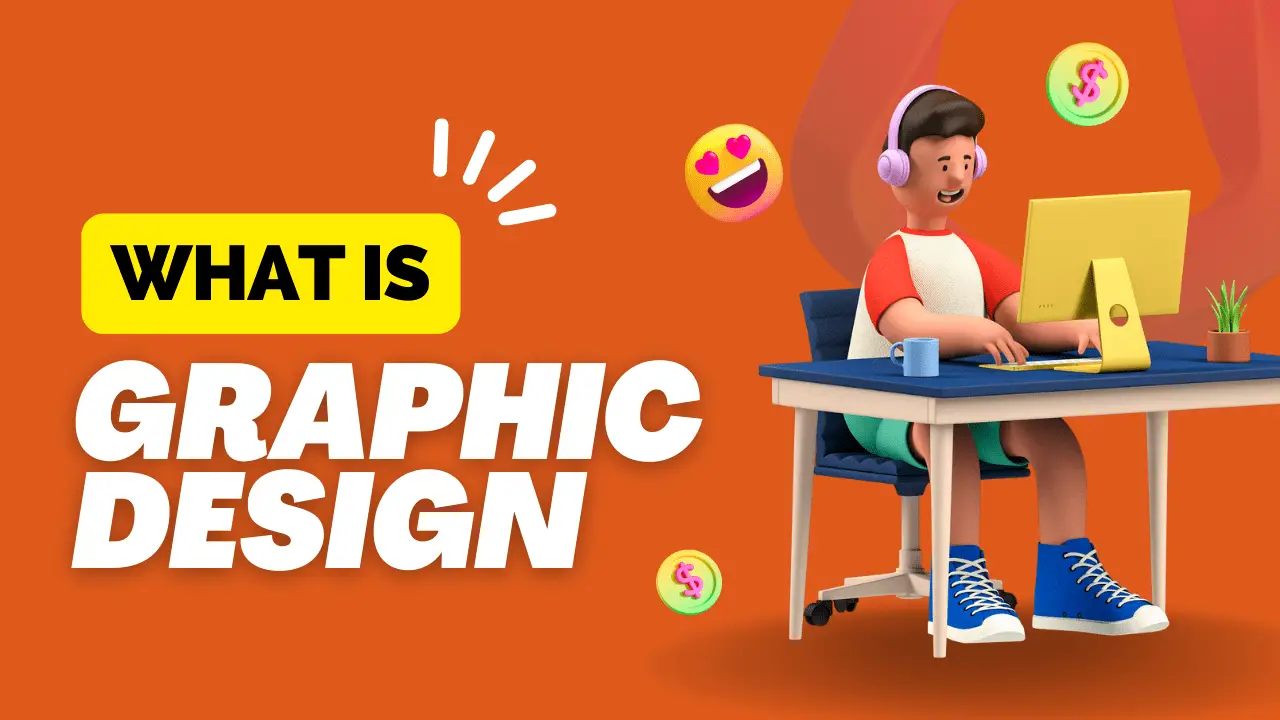How To Become A Graphic Designer
Becoming a graphic designer involves a combination of education, skills development, and practical experience.
Here’s a detailed step-by-step guide on how to become a graphic designer, along with examples and additional tips to help you succeed in this creative field:
Understand the Role of a Graphic Designer: Before you start your journey, it’s essential to understand the responsibilities and expectations of a graphic designer. This role involves creating visual content to communicate ideas, concepts, or messages effectively.
Educational Background: Many graphic designers hold at least a bachelor’s degree in graphic design or a related field. However, while a degree can be beneficial, it’s not always necessary. Some successful graphic designers are self-taught or have degrees in unrelated disciplines. Consider your financial situation and your learning preferences when deciding on an educational path.
Example: Suppose you choose to pursue a degree in graphic design. In that case, you might enroll in a program like the Bachelor of Fine Arts (BFA) in Graphic Design, where you’ll study topics such as typography, color theory, layout design, and software tools like Adobe Creative Suite.
Develop Fundamental Skills: Regardless of your educational path, you’ll need to develop essential skills, including:
Design Software: Learn how to use design software like Adobe Illustrator, Photoshop, and InDesign. These tools are industry-standard, and proficiency in them is crucial.
Typography: Understand the principles of typography, including font selection, spacing, and layout.
Color Theory: Learn how to use colors effectively in your designs and understand the psychology of color.
Layout and Composition: Study the principles of design layout, including balance, hierarchy, and alignment.
Problem-Solving: Graphic design often involves solving visual communication problems. Develop your problem-solving skills to create effective designs.
Example: As you learn design software, you can experiment with creating your own posters, flyers, or social media graphics. This hands-on practice will help you apply the skills you’re learning.
Build a Portfolio: Your portfolio is a collection of your best design work. It’s a critical tool for showcasing your skills to potential employers or clients. Your portfolio should include a variety of projects that demonstrate your abilities in different areas of graphic design.
Example: Your portfolio might include examples of logo designs, posters, brochures, web designs, or any other design projects you’ve created during your education or personal projects.
Gain Practical Experience: Internships or part-time jobs in design-related roles can provide valuable experience and networking opportunities. Entry-level positions like a junior graphic designer or design assistant can help you build your resume.
Example: You might intern at a local design agency or work on design projects for a non-profit organization to gain experience and build your portfolio.
Networking and Joining Professional Organizations: Joining design associations like AIGA (American Institute of Graphic Arts) or local design groups can help you network with other professionals, stay updated on industry trends, and discover job opportunities.
Example: Attend design conferences, workshops, and local meetups to connect with fellow designers and potential clients.
Stay Updated and Continuously Learn: The field of graphic design is continually evolving with new software, trends, and technologies. Keep learning and expanding your skills to remain competitive in the industry.
Example: Enroll in online courses, watch tutorials, and read design-related books and blogs to stay up-to-date with the latest developments in graphic design.
Seek Employment or Freelance Opportunities: Once you’ve honed your skills and built a strong portfolio, you can start looking for graphic design jobs, whether as an in-house designer for a company, at a design agency, or as a freelance designer. Tailor your job search to your interests and career goals.
Example: You may apply for a position as a graphic designer at a marketing agency, where you’ll work on projects for various clients, or you might choose to freelance and work on a project-by-project basis.
Establish Your Brand: If you decide to work as a freelance graphic designer, it’s essential to create a personal brand and online presence. This can include a professional website, social media profiles, and a strong online portfolio to attract clients.
Example: Create a personal website showcasing your work, your design process, client testimonials, and contact information.
Build a Strong Reputation: Your reputation in the design community and with clients is crucial. Consistently delivering high-quality work and excellent customer service can lead to referrals and repeat business.
Example: As you work on projects, ask clients for feedback and testimonials to build trust and credibility in your field.
- Specialize or Diversify: As you gain experience, you may choose to specialize in a particular niche of graphic design, such as web design, branding, or packaging. Alternatively, you can continue to diversify your skills and work on a wide range of design projects.
Example: If you have a passion for book cover design, you could specialize in that area and seek clients in the publishing industry.
- Stay Inspired and Creative: Graphic design is a creative field, and staying inspired is vital. Continuously seek inspiration from art, nature, and other design work. Experiment with new techniques and approaches to keep your creativity flowing.
Example: Attend art exhibitions, explore new design trends, and participate in design challenges to keep your creativity sharp.
Becoming a graphic designer is a dynamic and rewarding journey. Your path may vary based on your unique circumstances, goals, and interests, but a combination of education, skills development, practical experience, and a strong portfolio can pave the way to a successful career in graphic design.


